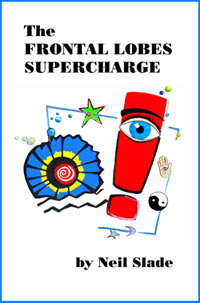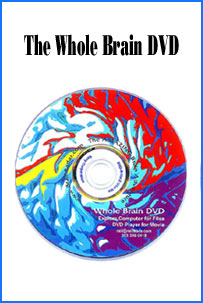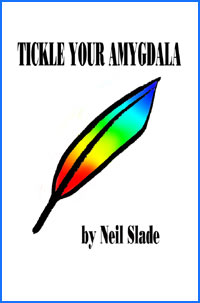|
Review by Yusef El-Sobky,
At first upon reading about the frontal lobe system, I must admit I was sceptical. I have always been enthusiastic about personal growth; however I have read many books claiming to be able to improve your live drastically or to make you practically perfect with an easy 3-step miracle breakthrough. Many writers claiming that if you would just transfer $800 of your hard-earned money to their account, they will share the secret of true happiness with you. Upon reading about the Frontal Lobe Supercharger, with a strong hold onto my cash, I was intrigued. I began to realise that this book actually does have an original and credible concept as a foundation for the techniques – as opposed to a collection of ancient philosophies gathered from the first book the author could find in the library, or theories that have been conjured in the mind of the author within a few minutes. It did however seem to claim too much. Boost your intelligence, creativity, achieve ‘spiritual enlightenment’, and increase general happiness? All seemingly through a simple exercise of ‘tickling’ the amygdala, an area of the brain which has previously been known to be useless, a region that is not necessary for memory, balance, dopamine release etc. but medically understood to be just spare, useless matter, such as the appendix. I am not an expert on neuro-anatomy, but surely it is not possible to stimulate an area of the brain without moving a muscle, or to change the neuro-chemical flow simply by visualisation? One cannot change the flow of blood on demand, or intentionally cause the heart to stop pumping; why should this be any different? The only medically known information about the amygdala is that it is connected to mostly every region of the brain, although does not actively partake in any of those areas. For example the hippocampus as part of the limbic system is responsible for the memory and linked to emotion; yet this is within the frontal lobes that Mr. Neil Slade refers to throughout the book, idealising the fact that these can be activated to their full potential through stimulation of the amygdala. My only criticisms are that the first 57 pages play as a description of the amygdala, reinforcing the points in different ways, and the techniques begin after this. Understandably the idea of the amygdala must be expressed, although cutting down on the description would be helpful to the reader. The underlying point is one beautifully rendered elegant in its simplicity; however in conveying it I feel the author was overzealous in his approach in describing the amygdala; although the content of the book was highly gripping and entertaining. The concept of the amygdala and how it works was conveyed very simply and effectively, by describing it such as a light switch for the brain; when it is switched ‘off’ the majority of neural function is using the brain. When ‘clicked forward’, the frontal lobes are utilised and the primate brain becomes active, promoting creativity, intelligence, artistic skills, etc. The exercises in the book were practical, and allowed the reader to see the effects for himself. Many of the exercises cover and identify the ancient ideas such as meditation, but they are explained in terms of how it aids in different aspects of the mind, whether it be clarity of thought or general serenity. Stimulation of the amygdala achieves the same goal as meditation; however it directly influences the area of the brain involved. When the same effect of enlightenment is achieved through meditation, it could be seen as more of a side effect, as it usually takes much longer to attain. The action of clicking the amygdala is something that must be done routinely and often in order to create and reinforce the neural connections involved. Continually doing this action should eventually lead to ‘popping’ of the frontal lobes, where the state of consciousness and brain function is predominantly within the frontal lobes, associated with higher consciousness and happiness. The book includes many short and inventive exercises to get the reader familiar with the frontal lobes, and at one point describes the amygdala through a very creative story involving a character called ‘mirror’ which I believe is soon to become a film. The book ends with a final and vivid analogy of Mr. Slade’s own brain, and the atmosphere when it is held back in the reptilian side and when the amygdala is ‘clicked’ forward. Personally, so far I am only feeling very subtle changes in emotion when clicking my amygdala forward, although the negative feelings are definitely minimised. I shocked myself when I successfully ‘burst’ a cloud, an exercise included in the book where upon clicking the amygdala and focusing on a cloud, one can cause it to vaporise. This book is highly recommended for anybody willing to expand their mind and anybody striving for personal growth, this may be what you are looking for.
Yusef El-Sobky, United Kingdom, October 9, 2005
|
|
The AMAZING BRAIN ADVENTURE's MOST POPULAR PAGES:
Your Amazing Brain Adventure is a web site all about Tickling Your Amygdala- i.e. turning on the best part of your brain as easy as clicking on a light switch. This is done as easily as imagining a feather inside of your head stimulating a compass, the amygdala. The amygdala is a set of twin organs, a part of your brain that sits right in between the most advance part of your brain- the frontal lobes and pre-frontal cortex- and the most primitive part of your brain- your "reptile brain" and brain stem. By tickling your amygdala you instantly and directly increase creativity, intelligence, pleasure, and also make possible a spontaneous natural processes known as "paranormal abilities", although such things as telepathy and ESP are really as natural as breathing, or as easy doing simple math in your head. The ability to self stimulate the amygdala by something as simple as thought has been proven in laboratory experiments, such as those conducted at Harvard University research labs, 1999-2009, and can be tracked with modern brain scanning machines such as fMRI and PET... Indeed, thought is faster than light.
Other sites of interest: EasyPaintYourCar.com is a painting site dedicated to learning how to paint a car yourself, even if you've never painted a car before. You can refinish your car to professional standards at home, better than if you take it to someone else, and enjoy doing it at a fraction of the cost of having it done in an expensive shop. You can repair dents, rust, and use the most durable real automotive paint, and even learn to apply it without any special or expensive gear, in a safe and enjoyable manner. Paint your car in your garage, car port, or even driveway. You can spray, use an HVLP gun, or even use a roller.
Easy Make A Kindle and Your Own Publishing are sites about self-publishing and writing, and how any person can publish materials, print, online, and electronic books. You can drop out of the corporate slave labor rat race and own your own life by writing and distributing your own books on the subject that you know best.
InkJetHelper.com is a web site about escaping from the ridiculous cost of ink jet printer ink refilling- and refilling your printer for pennies instead of $70 a shot. It also has useful tips about maintaining ink jet printers, especially Canon brand printers.
Julia Lu Painting is all about the creative works of Chinese painter Julia Lu, a modern master of oil and water color painting. Julia shares her creative secrets, ideas, as well as her art work.
Off-site links Neil on Lulu Car On Lulu Tribe Blogger Wordpress Cookbook Space PaintWordpress Tripod 2 Google Wands Amazon B&N Kindle Facebook Linked GooglePlus Coast2Coast Viewzone YouTube 2 Blogtalk 1 2 3 4 5 6 7 8 9 1 2 3 4 5 6 7 8 9 1 2 3 4 5 6 7 8 9 1 2 3 4 5 6 7 8 9 a b c d e f a b c e f g h i 8 7 6 5 4 3 1 2 a b c d e f g h i a b c d e f g h i j k l m n o p q r s r u v w x y |



